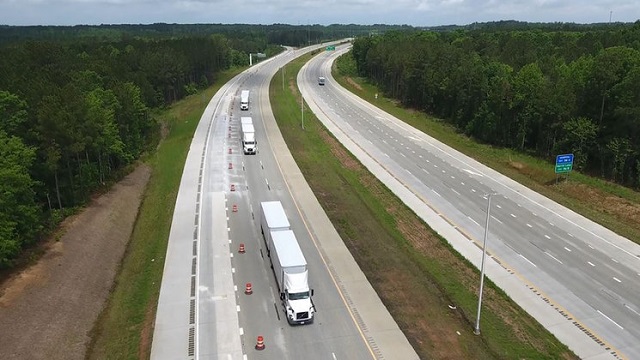Volvo Develops Autonomous Logistics Management System
The Volvo Group has developed a system where autonomous electric vehicles are coordinated as they travel between logistics centers.
The system consists of autonomous electric vehicles that are wirelessly connected to a transport control center. The control center monitors parameters such as each vehicle’s location, load and battery charge, using this data to ensure that the overall fleet logistics as well as goods and vehicle flow are as efficient as possible.
The system is intended for use within areas characterized by short distances, large cargo volumes and high delivery precision, for example between logistic hubs. The new goods transport solution will be further developed in close cooperation with customers.
Earlier this year, Volvo Trucks North America, together with FedEx and the North Carolina Turnpike Authority, used advanced driver assistance system (ADAS) technology to conduct on-highway truck platooning as part of ongoing research collaboration.
The platoon consisted of three trained, professional truck drivers in Volvo VNL tractors, each pulling double 28-foot trailers. Using a wireless vehicle-to-vehicle communication technology, the tractors and trailers remained in constant communication. The tractors and trailers traveled at speeds of up to 62 mph while keeping a time gap of 1.5 seconds, maintaining a closer distance than what is typical for on-highway tractors. Staged and unplanned vehicle cut-ins demonstrated how the technology handles common traffic situations.
The test marked the first public on-highway showcase of platooning technology between a major truck manufacturer and a transportation company in the U.S.

“Volvo Trucks has long supported platooning because it benefits freight companies and professional drivers alike through safer, more fuel-efficient operations,” said Per Carlsson, Acting President of Volvo Trucks North America. “We continue preparing for deployment of trucks with greater vehicle-to-vehicle communication capabilities that support higher levels of ADAS. We know these technologies will be part of our future, but exact timing depends on many things, namely regulations, infrastructure, safety standards and market demand.”
The potential benefits of platooning that include faster responses to hard braking while maintaining safety and fuel efficiency. The vehicle-to-vehicle communication system helps reduce the reaction time for braking and enables vehicles to follow closer, automatically matching each other’s speed and braking. The advanced technology is meant to serve as an aid – not a replacement – for skilled professional truck drivers.
When trucks can drive closely behind one another, fuel efficiency is improved as a result of reduced drag. Drag accounts for up to 25 percent of a truck’s total fuel consumption, and the closer the trucks drive to each other, the greater the fuel-saving potential. Reducing the traveling distance between vehicles also allows for greater highway utilization, helping alleviate traffic congestion.
